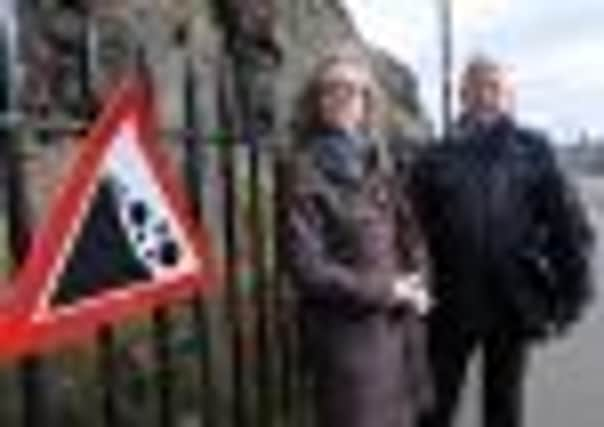Edinburgh Castle wall planned to protect visitors


The 170 metre-long wall along Johnston Terrace is designed to guard against loose rocks falling from the basalt cliff face.
Up to a quarter of the carriageway will be lost to allow the £2000 -a-metre structure to be created.
Advertisement
Hide AdAdvertisement
Hide AdComputerised trajectory modelling has been used to determine a height of three metres as offering the public the greatest degree of protection.
The road will be closed from March 4 until March 28 to allow a temporary barrier to be installed and construction of the permanent wall is expected to take up to 18 months.
Historic Scotland, which is the body responsible for the Castle, plans to host consultations in the coming weeks with partner agencies and community bodies to gather feedback on the works and any subsequent design options.
It is understood that the possibility of murals or carved mosaics are being considered to brighten up the wall.
The “proactive” move comes after five instances of rock falls from the cliff face in as many years.
Historic Scotland director of heritage management, Barbara Cummins, who is leading the project, said: “While we have no immediate fears regarding the rock face, this is a project we have wanted to carry out for several years.
“The new wall will offer a buffer zone between any falling debris and passing members of the public.
“The computerised modelling tested 1000 rock fall scenarios along six different points and it found that with the wall in place 90 plus per cent of debris will land within it.”
Advertisement
Hide AdAdvertisement
Hide AdBarbara also denied that regular firework displays and flypasts for the Tattoo are to blame for undermining the Castle Rock – instead she said the Scottish weather and vegetation are at fault.
She added: “The constant freeze and thaw during the winter opens up cracks in the rock face which allows a plant, known as valerian to take root. Once this germinates its bulb expands, causing the rocks to fracture and fall.”
Once work begins to erect the temporary barrier on March 4, Historic Scotland will also begin spray treatment to eradicate valerian – a process which is to be repeated every two years.
While some metal netting has previously been installed over a limited area of the Princes Street face of the rock to provide protection for the railway line, this solution was not felt appropriate in this instance as it would have a detrimental impact on the Castle’s image.
Rubble and strife in past
THE Castle has suffered several instances of rock falls in recent years, the most recent happening during the Festival last year when a “shoebox”- sized chunk of rock damaged two vehicles parked along Johnston Terrace.
In September 2010 heavy rain dislodged a large boulder which narrowly missed motorists below.
Two years before, in September 2008, a 20-inch piece of rock fell and smashed on to the roof of a parked tourist bus at around 5am.
However, the most harrowing incident occurred in 2006, when a huge boulder fell and smashed into a taxi, causing thousands of pounds of damage.
Advertisement
Hide AdAdvertisement
Hide AdMoments earlier the cab’s driver had watched as a tourist was hit on the head by a rock as she tried to flee the crumbling stones.
The driver said the falling debris had been “substantial pieces of rock” and added that it was “a miracle” that no- one had been seriously hurt in the incident, which was the second rockfall to be reported that year.